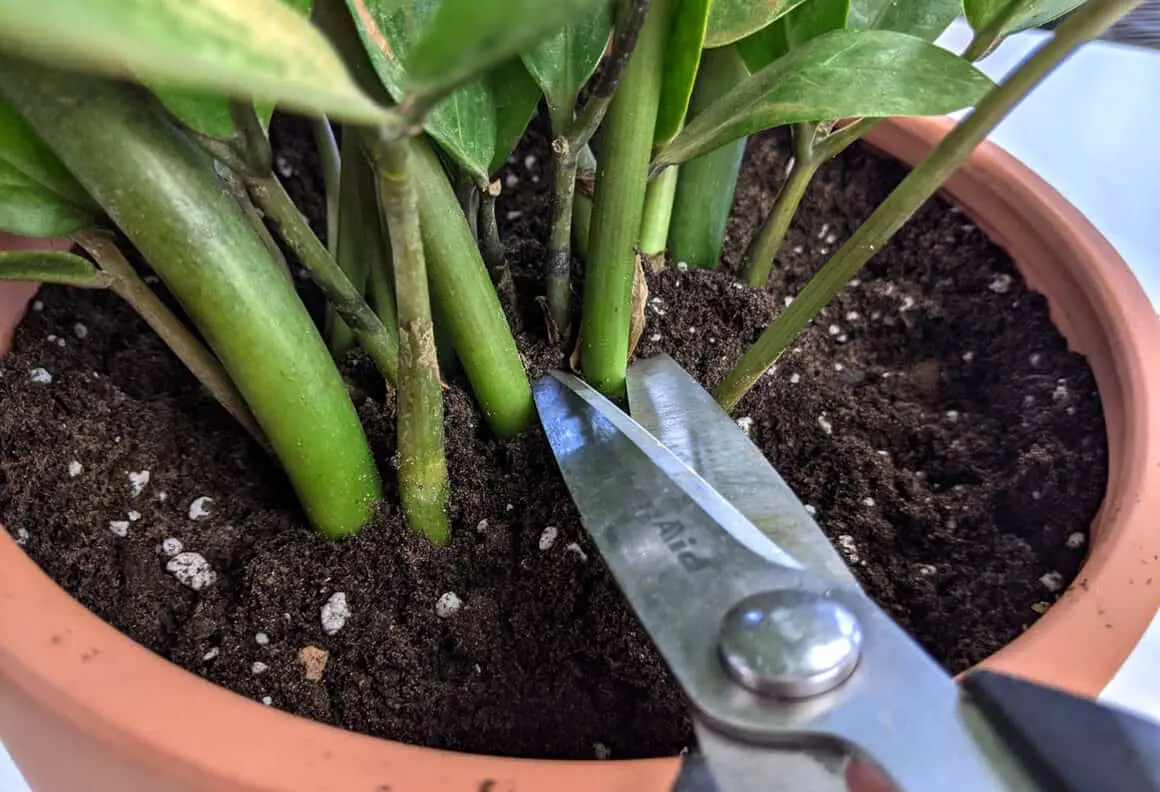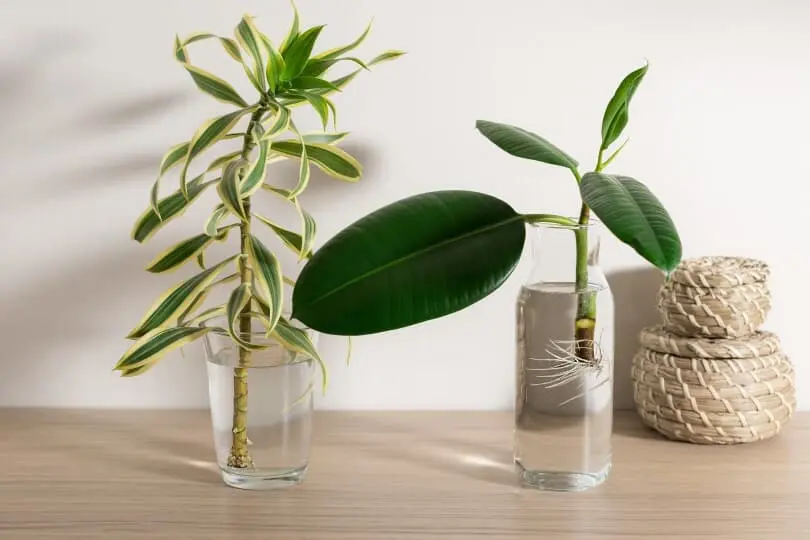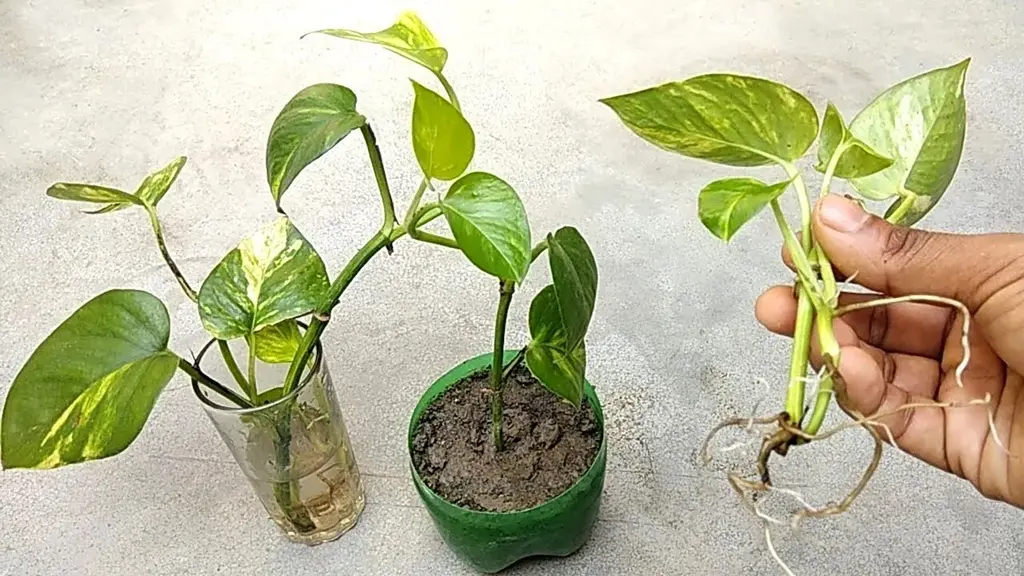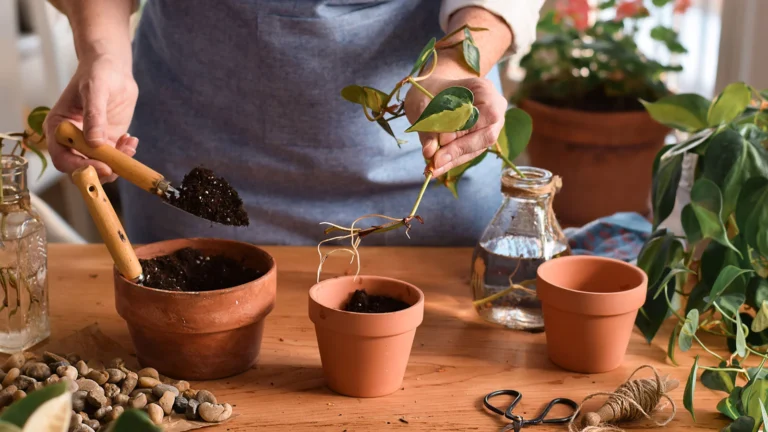Contents
Introduction
Ever wanted to grow more of your favorite plants without having to buy new ones? Starting plant cuttings is a fantastic way to expand your garden or indoor jungle without breaking the bank. Whether you’re a seasoned green thumb or just starting out, learning how to propagate plants can be both fun and rewarding. But here’s the big question: should you start your plant cuttings in water or soil? Both methods have their perks, but which one is right for you?
In this guide, we’ll dive into the basics of plant propagation and help you understand the key differences between rooting cuttings in water versus soil. You’ll learn not only how to get started with each method but also the pros and cons to consider. We’re keeping things simple and straightforward, so you don’t need a degree in botany to get the hang of it.
By the end of this guide, you’ll know exactly how to choose the best method for your plants and feel confident in your ability to grow new greenery from cuttings. Ready to get your hands dirty—or maybe a bit wet? Let’s jump in and discover the best way to start your plant cuttings!
Understanding Plant Cuttings
So, what exactly are plant cuttings? Imagine this: You love a certain plant and want more of it, but instead of buying new ones, you can simply take a piece of the original plant and turn it into a new one. That’s where cuttings come in!
What Are Plant Cuttings?
Plant cuttings are basically snippets of a plant that you use to grow a new one. There are a few different types:

- Stem Cuttings: These are sections of a plant’s stem, usually with a few leaves attached. They’re super common and work well for a lot of plants.
- Leaf Cuttings: Just as it sounds, these are individual leaves used to grow new plants. They’re great for succulents and some houseplants.
- Root Cuttings: These involve taking a piece of the plant’s root and growing a new plant from it. They’re less common but still useful for certain types of plants.
Why Use Cuttings?
Cuttings are a great way to grow new plants because they’re a low-cost alternative to buying seeds or new plants. Plus, it’s a fun way to expand your garden or indoor plant collection. The new plant is essentially a clone of the original, so if you had a favorite plant that did exceptionally well, you can make more plants with the same traits.
Ideal Plants for Cuttings
Some plants are super easy to propagate from cuttings, including:
- Pothos: This popular houseplant is known for its easygoing nature and thrives in both water and soil.
- Spider Plants: These plants grow “babies” that are perfect for propagating.
- Succulents: Many succulents grow well from leaf or stem cuttings.
However, not every plant is cut-out for this method. Some plants don’t propagate well from cuttings and might be better off started from seeds or other methods.
In this section, we’ve laid the groundwork for understanding what plant cuttings are and how they can be used to expand your plant collection. Next up, we’ll dive into the specifics of how to get those cuttings started in both water and soil!
Starting Cuttings in Water
Ready to dive into the world of water propagation? Starting plant cuttings in water is one of the easiest and most visual ways to grow new plants. It’s a straightforward method that lets you see the roots develop right before your eyes. Plus, it’s a great option if you don’t have a green thumb yet!

How to Start Cuttings in Water
- Selecting the Right Cutting: First things first, you need to pick a healthy cutting. Look for a piece of the plant that’s about 4-6 inches long with a few leaves. Avoid cuttings with yellowing or damaged leaves. The healthier the cutting, the better the chances of it growing into a thriving plant.
- Preparing the Cutting: Trim the cutting just below a leaf node (the point where leaves attach to the stem). Remove any leaves from the bottom half of the cutting to prevent them from rotting in the water. Make sure to cut at a slight angle to increase the surface area for root growth.
- Choosing a Container: Pick a clear glass or jar to hold your cutting. Clear containers are great because they let you see the roots as they develop. The container should be clean to avoid introducing any bacteria that could harm the cutting.
- Placing the Cutting in Water: Fill the container with enough water to cover the bottom half of the cutting but not the leaves. Place the cutting in the container and make sure it’s not touching the sides. Set the container in a spot with bright, indirect light—direct sunlight can be too harsh.
- Maintaining the Cutting: Change the water every few days to keep it fresh and prevent the growth of mold or algae. Keep an eye on the cutting and look for root growth. Once the roots are a few inches long, it’s time to transplant the cutting into soil.
Benefits of Water Propagation
- Ease of Monitoring Root Growth: One of the best things about water propagation is that you can see the roots growing. It’s a satisfying process to watch your cutting develop.
- Fewer Risks of Soil-Borne Diseases: Since you’re not using soil, there’s less risk of diseases and pests affecting your cutting.
- Less Need for Soil Preparation: You don’t need to worry about mixing soil or ensuring good drainage. Just water and watch!
Potential Drawbacks
- Limited Root Development: Sometimes, roots grown in water can be a bit weaker than those grown in soil. They might need extra care when transitioning to soil.
- Potential for Rot: If the water isn’t changed regularly, or if the cutting is left in water too long, there’s a risk of root rot.
- Limited Plant Options: Not all plants like to grow in water. Some may struggle or not propagate well using this method.
Starting cuttings in water is a fun and visually rewarding way to grow new plants. It’s perfect for beginners and those who love to watch their plants grow. Up next, we’ll explore the process of starting cuttings in soil and compare it to water propagation!
Starting Cuttings in Soil
Thinking about giving soil propagation a try? Starting plant cuttings in soil is a time-tested method that many gardeners swear by. It’s a bit more traditional than water propagation, but it can lead to strong, healthy plants. If you’re ready to get your hands dirty, let’s dive into the details!

How to Start Cuttings in Soil
- Selecting the Right Cutting: Just like with water propagation, you’ll want to start with a healthy cutting. Choose a piece that’s about 4-6 inches long with a few leaves. Make sure it’s free from any signs of disease or damage. The fresher and healthier the cutting, the better your chances of success.
- Preparing the Soil: Use a well-draining potting mix to give your cutting the best start. You can buy a pre-made mix or make your own by combining equal parts peat, perlite, and vermiculite. Good drainage is crucial to prevent root rot and other issues.
- Planting the Cutting: Make a small hole in the soil with a pencil or stick and gently place the cutting in the hole. Firm the soil around the base of the cutting to hold it in place. Water the soil lightly to settle it and ensure the cutting has good contact with the soil.
- Creating the Right Environment: Place the pot in a spot with bright, indirect light. Too much direct sunlight can be too harsh, while too little light might slow down root development. Maintaining a warm and humid environment can also help. You can cover the pot with a plastic bag or a plastic dome to keep the humidity high.
- Care and Maintenance: Keep the soil moist but not soggy. Overwatering can lead to root rot, so make sure the soil drains well. If you’re using a humidity dome, make sure to ventilate it occasionally to prevent mold. Watch for any signs of pests or disease and address them promptly.
Benefits of Soil Propagation
- Robust Root Development: Roots grown in soil often develop stronger and more complex root systems compared to those grown in water. This can lead to healthier plants that adapt well to their new environment.
- Variety of Plant Options: Soil propagation works well for a wide range of plants, including many that might not thrive in water.
- Natural Growth Conditions: Soil provides a more natural growing medium, which can be beneficial for plants used to growing in soil.
Potential Drawbacks
- Difficulty in Monitoring Root Growth: One downside is that you can’t see the roots developing. This can make it harder to know when your cutting is ready to be transplanted.
- Risk of Soil-Borne Diseases: Using soil introduces the risk of diseases and pests, which you’ll need to manage.
- More Complex Setup: Soil propagation requires more preparation and care, including monitoring moisture levels and ensuring good drainage.
Starting cuttings in soil can be a great choice if you’re looking for strong, healthy plants and don’t mind a bit of extra care. It’s a reliable method that has been used by gardeners for generations. Next up, we’ll compare water and soil propagation to help you decide which method is best for your plants!
Comparing Water vs. Soil Propagation
So, you’ve learned how to start cuttings in both water and soil. But which method is best for you? Let’s break down the key differences between water and soil propagation to help you decide which approach will work best for your plants.
Root Growth and Plant Health
- Water Propagation: When you start cuttings in water, you get to watch the roots grow right before your eyes. It’s like having a front-row seat to the growth process! Water propagation often shows roots quickly, which can be very satisfying. However, these roots can sometimes be a bit delicate and may need extra care when you move the plant to soil.
- Soil Propagation: Roots developed in soil generally grow stronger and more complex. Soil provides a more natural environment, which helps the roots adapt better when the plant is established. While you can’t see the root growth as easily, the roots tend to be more robust and resilient.
Ease of Care and Maintenance
- Water Propagation: Taking care of cuttings in water is pretty straightforward. You just need to change the water regularly and make sure the cutting gets enough light. It’s low-maintenance and doesn’t require much preparation.
- Soil Propagation: Growing cuttings in soil can be a bit more involved. You need to ensure the soil is well-draining, maintain the right moisture levels, and watch out for pests or diseases. It takes a bit more effort, but many gardeners find it worth it for the healthy, strong plants that result.
Suitability for Different Plants
- Water Propagation: Some plants are perfect for water propagation. Popular choices include pothos, spider plants, and many houseplants. However, not all plants like to grow in water, so it’s important to choose the right ones.
- Soil Propagation: Soil is versatile and works well for a wider range of plants. If you’re trying to propagate something less common or a plant that doesn’t do well in water, soil might be the better option.
Long-Term Success Rates
- Water Propagation: One thing to keep in mind with water propagation is that transitioning from water to soil can sometimes be tricky. The roots need to adjust to a different environment, which can be a bit of a challenge.
- Soil Propagation: Plants started in soil usually have a smoother transition to their permanent home. Since they’ve been growing in soil from the start, they’re often better adapted to thrive in the ground or in a larger pot.
Making Your Choice
When deciding between water and soil propagation, think about what works best for you and your plants. If you enjoy watching roots develop and want a low-maintenance start, water propagation is a great choice. On the other hand, if you’re aiming for strong, robust plants and don’t mind a bit of extra care, soil propagation might be the way to go.
In the next section, we’ll share some tips for success with both methods and help you avoid common mistakes. Let’s get you on the path to plant propagation success!
Tips for Success
Ready to get your plant cuttings growing? Here are some handy tips to help you succeed with both water and soil propagation. Whether you’re new to propagating or just looking for ways to improve your results, these tips will make your journey smoother and more enjoyable.
Choosing the Right Method for Your Plant
- Know Your Plant: Different plants have different needs. Some thrive in water, while others prefer soil. Research your specific plant to see which method is recommended. For example, pothos and spider plants usually do well in water, while succulents and herbs often prefer soil.
- Consider Your Space and Lifestyle: Think about how much time you can dedicate to plant care. If you prefer a low-maintenance option, water propagation might be easier. If you don’t mind a bit more effort and want to grow a variety of plants, soil propagation could be a better fit.
Common Mistakes to Avoid
- Overwatering or Underwatering: In water propagation, make sure the water level is just right—enough to cover the base of the cutting but not submerge the leaves. For soil propagation, keep the soil moist but not soggy. Overwatering can lead to rot, while underwatering can cause stress to the cutting.
- Neglecting to Change the Water: If you’re propagating in water, remember to change the water regularly to keep it fresh and prevent mold or algae growth. Stale water can lead to unhealthy cuttings.
- Using Poor Quality Soil: When propagating in soil, make sure you use a well-draining potting mix. Avoid garden soil or anything too heavy, as it can lead to poor root development and waterlogging.
- Skipping the Prep Work: Whether you’re using water or soil, proper preparation is key. For water, ensure your container is clean. For soil, make sure the mix is well-aerated and free from pests.
Troubleshooting Issues
- Yellowing Leaves: If you notice your cutting’s leaves turning yellow, it could be a sign of overwatering or poor light. Check your water levels and light conditions. In soil propagation, yellowing might indicate a need for better drainage or nutrient adjustments.
- Slow or No Root Growth: In water propagation, slow root growth can be due to inadequate light or water quality. Ensure your cutting is in a bright spot and that you’re changing the water regularly. For soil propagation, slow growth could be a result of compacted soil or insufficient moisture. Make sure the soil is loose and consistently moist.
- Pests and Diseases: Keep an eye out for pests like aphids or mold, especially in soil propagation. Regularly check your cuttings and use natural pest control methods if needed. For water propagation, ensure your container is clean and free from any algae or mold.
Final Tips
- Be Patient: Propagation takes time. Don’t get discouraged if you don’t see roots immediately. With the right care, your cuttings will eventually thrive.
- Experiment and Learn: Don’t be afraid to try different plants and methods. The more you experiment, the more you’ll learn about what works best for you and your plants.
With these tips in mind, you’ll be well on your way to successful plant propagation. Whether you choose water or soil, following these guidelines will help you grow healthy, thriving plants. Next, we’ll wrap up with a summary and some final recommendations to set you on the path to propagation success!
Conclusion
So there you have it—everything you need to know about starting plant cuttings in water versus soil! By now, you should have a solid understanding of how each method works and which might be the best fit for your plants and gardening style.
Summary of Key Points
- Water Propagation: This method is great for beginners and offers a front-row seat to watch your roots grow. It’s simple and low-maintenance, making it perfect for plants like pothos and spider plants. However, remember to manage water levels and change the water regularly to avoid issues like root rot.
- Soil Propagation: Ideal for those who want robust, healthy plants. Soil propagation supports strong root development and is suitable for a wide range of plants. While it requires more care and attention to avoid problems like overwatering and pests, it’s a tried-and-true method with great results.
Final Recommendations
- Choose Based on Your Plant and Space: If you love seeing the growth process and want something low-maintenance, go for water propagation. If you’re aiming for strong, resilient plants and don’t mind a bit more work, soil propagation is the way to go.
- Experiment and Adapt: Don’t hesitate to try both methods and see what works best for you. Each plant is unique, and what works for one may not work for another. Experimenting will help you find the best approach for different types of plants.
- Be Patient and Persistent: Propagation takes time, and not every cutting will take root immediately. Stay patient, keep learning, and adjust your techniques as needed. With a bit of care and persistence, you’ll soon be enjoying a thriving collection of new plants.
Thanks for joining us on this journey into the world of plant propagation. We hope this guide has given you the confidence to start your own cuttings and grow your plant collection. Happy gardening, and here’s to growing lush, healthy plants!



